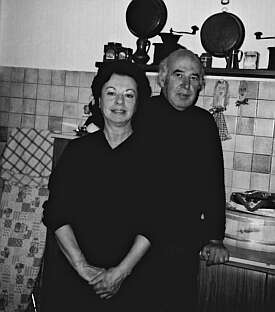 |
[ZAWiW] [gemeinsamlernen] [LiLL] | ||
|
|
|
|
| home | ||
|
|
Bread in Italy | |
|
|
El Pistor or Fornaro | |
|
|
How Bread is made... | |
 |
||
How Bread is made...
Stand:Memoria di panificazione in casa
MY MEMORIES ABOUT BREAD
During the cold winter evenings, my uncle Ferruccio used to tell the people
who had gathered in the stable that, in the morning following St. John’s night,
young girls collected the dew to produce the yeast necessary to make bread. At
that time, bread was handmade at home, using a mixture of flour and water and
some fermented dough containing yeast, which had been set aside during the
previous production of bread. The new dough was wrapped with a linen cloth and
put in a basket which was covered with a blanket and placed close to the
fireplace or in the stable in winter.
The people who could use the baker’s oven put the basket with the dough, which
meanwhile had risen, in a wheelbarrow, together with the flour sack and the wood
for the oven. At the baker’s the dough was mixed with more flower in the mixer
and after being hand-kneaded it was cut in slices and shaped into rolls as big
as a salami. The rolls were cut into pieces and two pieces were joined to obtain
the traditional country-bread loaf: the “Ciopa”. The Ciope were then put on
wood tables and left to rise for a few hours.
Meanwhile, a fire had been lit in the oven using the wood brought from home,
some deadwood that could not be used for other purposes, the so-called “fascine”.
When the oven was hot, the ash was removed with the appropriate tool, and the
bread was put in the oven. The door of the oven was closed and the baking was
checked through a peep-hole. After a while, based on the temperature of the oven,
bread was ready. The baker was paid for the use of the oven, and the bread was
taken home in a sack.With the leftovers dough , small loaves of bread with
different shapes were baked for the children. The “colombetta” was very
popular.
Nowadays, a public oven to bake bread is no longer used, a few may still be
found in some country houses, where at Easter the traditional “Focaccia” is
baked. A wood oven can also be found in modern houses to bake “Pizza”.
Paola Faggian, Giuseppe Furin

